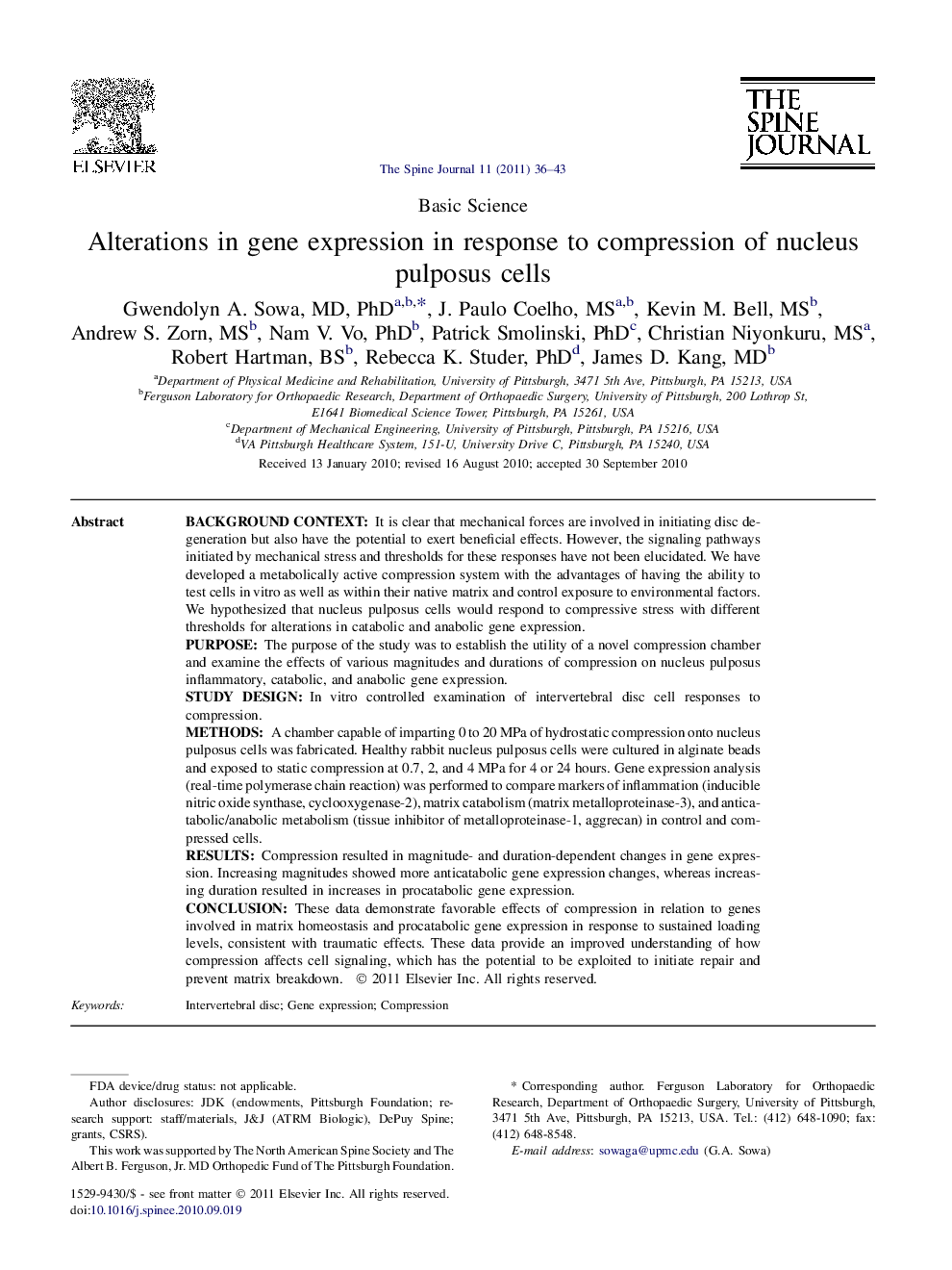| Article ID | Journal | Published Year | Pages | File Type |
|---|---|---|---|---|
| 4099401 | The Spine Journal | 2011 | 8 Pages |
Background contextIt is clear that mechanical forces are involved in initiating disc degeneration but also have the potential to exert beneficial effects. However, the signaling pathways initiated by mechanical stress and thresholds for these responses have not been elucidated. We have developed a metabolically active compression system with the advantages of having the ability to test cells in vitro as well as within their native matrix and control exposure to environmental factors. We hypothesized that nucleus pulposus cells would respond to compressive stress with different thresholds for alterations in catabolic and anabolic gene expression.PurposeThe purpose of the study was to establish the utility of a novel compression chamber and examine the effects of various magnitudes and durations of compression on nucleus pulposus inflammatory, catabolic, and anabolic gene expression.Study designIn vitro controlled examination of intervertebral disc cell responses to compression.MethodsA chamber capable of imparting 0 to 20 MPa of hydrostatic compression onto nucleus pulposus cells was fabricated. Healthy rabbit nucleus pulposus cells were cultured in alginate beads and exposed to static compression at 0.7, 2, and 4 MPa for 4 or 24 hours. Gene expression analysis (real-time polymerase chain reaction) was performed to compare markers of inflammation (inducible nitric oxide synthase, cyclooxygenase-2), matrix catabolism (matrix metalloproteinase-3), and anticatabolic/anabolic metabolism (tissue inhibitor of metalloproteinase-1, aggrecan) in control and compressed cells.ResultsCompression resulted in magnitude- and duration-dependent changes in gene expression. Increasing magnitudes showed more anticatabolic gene expression changes, whereas increasing duration resulted in increases in procatabolic gene expression.ConclusionThese data demonstrate favorable effects of compression in relation to genes involved in matrix homeostasis and procatabolic gene expression in response to sustained loading levels, consistent with traumatic effects. These data provide an improved understanding of how compression affects cell signaling, which has the potential to be exploited to initiate repair and prevent matrix breakdown.
